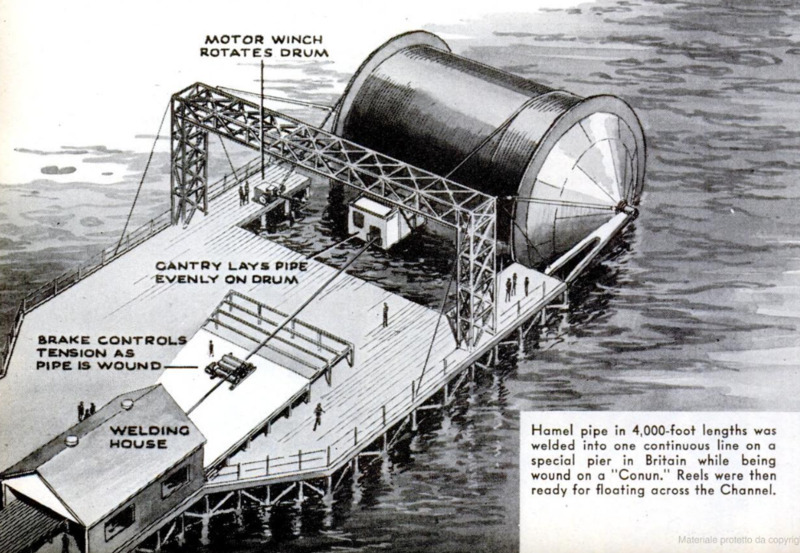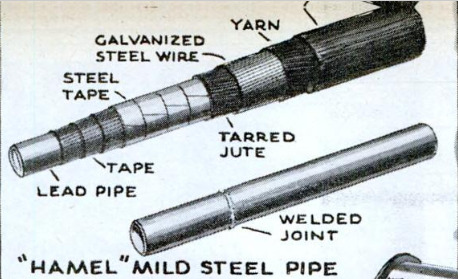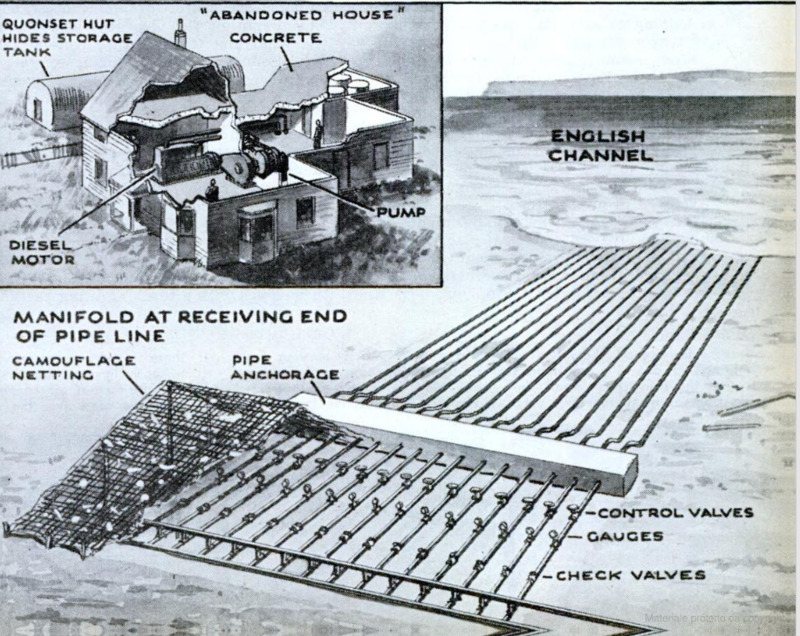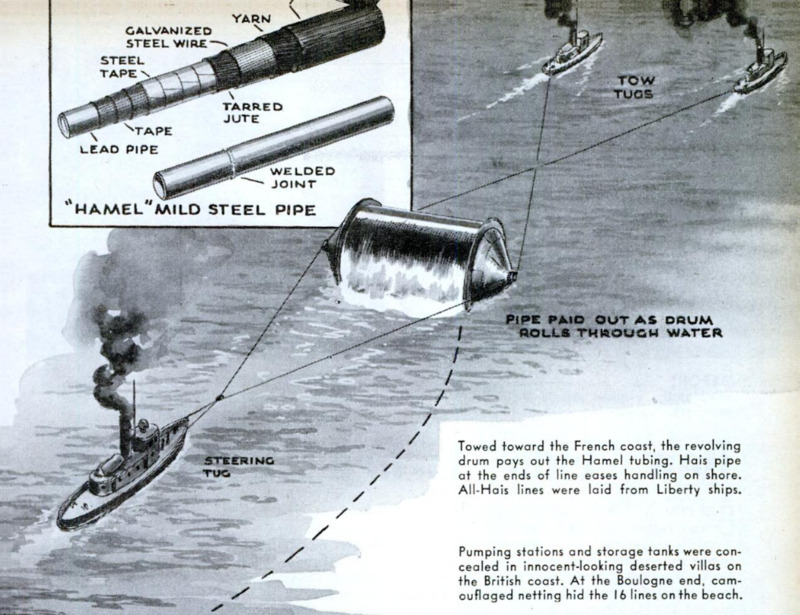-
Title (Dublin Core)
-
"Pluto" the undersea pipe line
-
Article Title and/or Image Caption (Dublin Core)
-
"Pluto" the undersea pipe line
-
extracted text (Extract Text)
-
ONE of the engineering triumphs of the
war was “Operation Pluto,” the laying
of 20 pipe lines under the English Channel
to supply gasoline to the Allied armies that
crushed Germany (P.S.M., July 45, p. 70).
Details of this achievement have just been
made public.
Four pipe lines stretch from the Isle of
Wight to Cherbourg and 16 from Dungeness
to Boulogne. For this stupendous under-
taking, two types of tubing were used. One,
the Hais, is based on the pattern of under-
sea electric cable, but has a hollow lead-pipe
tubular center three inches in diameter; the
other, the Hamel, consists of three-inch
steel pipe with 1i-inch walls that could be
welded easily into any required length,
To obtain enough of the Hais tubing, the
British Petroleum Warfare Department
called on the U.S. Army to produce 140
miles of it. Col. A. K. Eaton, of Scarsdale
Manor, N. Y.,, who was in charge of the
project, assigned the task to four American
firms, among them the Phelps Dodge Cop-
per Products Corp. of Yonkers, N. Y., and
the General Electric Company, and in a
matter of months the cable was in England.
‘The Hamel pipe, all of which was made in
England, could be wound on a drum like
cotton on a spool and pulled off again rela-
tively straight, provided the drum’s diameter
was greater than 30 feet. It was decided to
make these giant bobbins, known as “H.M.S.
Conundrums,” over 50 feet in diameter and
90 feet wide, with flanges six feet high.
Empty, each weighed 270 tons, but with 70
miles of pipe the weight zoomed to 1,600
tons,
Twelve of the 20 lines were composed en-
tirely of Hais pipe. This was laid by coil-
ing it in the holds of Liberty Ships and
paying it out over drums on the hatches.
Operation Pluto began a few weeks after
D Day, as soon as the mines had been swept
from the approaches to the tip of Cherbourg
Peninsula. After Boulogne was captured,
the Dungeness-Boulogne route was estab-
lished. Each line to Cherbourg took 10
hours to lay, but the shorter lines to
Boulogne were put down in five hours apiece.
Cleverly concealed pumping stations on the
British coast soon began to push the fuel
through the underwater pipes. As the Nazis
were forced backward, the Royal Army
Service Corps laid overland extensions to
Antwerp, to Eindhoven, to Emmerich, and
soon 1,000,000 gallons of fuel a day were
gurgling to the Rhine.
-
Language (Dublin Core)
-
eng
-
Date Issued (Dublin Core)
-
1945-08
-
pages (Bibliographic Ontology)
-
62-63
-
Rights (Dublin Core)
-
Public domain
-
Archived by (Dublin Core)
-
Sami Akbiyik
-
Marco Bortolami (editor)
 Popular Science Monthly, v. 147, n. 2, 1945
Popular Science Monthly, v. 147, n. 2, 1945








